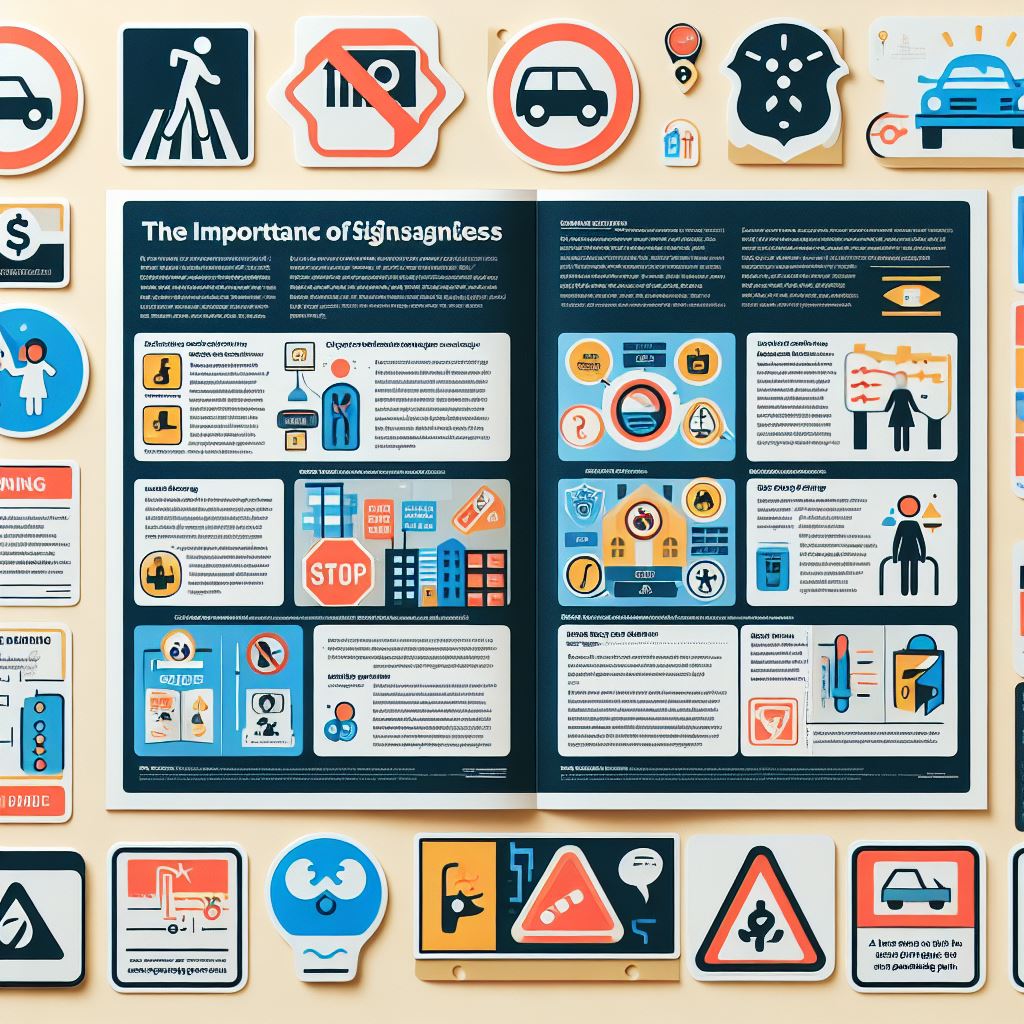In the hustle and bustle of daily life, we often overlook the silent guardians that guide us through our environments: signage. Whether you're navigating a construction site, working in a bustling workplace, or simply strolling through a public area, signage plays a crucial role in keeping us informed, safe, and aware. In this blog, we'll delve into the key aspects of signage awareness and why they matter more than you might realize.
1. Visibility: Have you ever squinted at a sign, struggling to decipher its message? That's a visibility issue. Signs should be prominent, easily visible, and readable from a distance. Clear fonts, contrasting colors, and appropriate sizing all contribute to better visibility.
2. Clarity: Ambiguity is the enemy of effective communication. Signs should convey their message clearly and concisely, leaving no room for misinterpretation or confusion. Simple language and intuitive symbols can go a long way in ensuring clarity.
3. Consistency: Imagine a world where every sign followed its own unique design and format – chaotic, right? Consistency is key to creating a cohesive signage system. Uniformity in design, color schemes, and placement fosters familiarity and ease of navigation.
4. Placement: Ever found yourself lost in a maze of corridors, desperately searching for a sign? Strategic placement is essential to guide people to their destinations efficiently. Signs should be strategically positioned in areas where they are most needed, such as intersections, entrances, and emergency exits.
5. Maintenance: A faded, weather-worn sign is about as useful as a chocolate teapot. Regular inspection and maintenance are imperative to ensure that signs remain legible and effective. From cleaning off dirt and debris to replacing damaged signs, proactive maintenance is the key to longevity.
6. Compliance: Rules and regulations exist for a reason – to keep us safe. Signs should adhere to relevant regulations and standards, whether it's OSHA guidelines for workplace safety or ADA requirements for accessibility. Compliance ensures that signs fulfill their intended purpose without compromising on safety or legality.
7. Accessibility: Inclusivity matters. Signs should be accessible and understandable for everyone, including people with disabilities. Braille signage, tactile elements, and audible cues are essential for ensuring that no one is left behind.
8. Multilingualism: In our diverse world, one language simply won't cut it. Signs should be provided in multiple languages if necessary to accommodate diverse communities and visitors. Multilingual signage promotes inclusivity and ensures that everyone can understand and act upon important information.
9. Illumination: Darkness is the enemy of visibility. In low-light conditions or during nighttime, illuminated signs are a beacon of guidance. Adequate lighting ensures that signs remain visible and legible regardless of the time of day or environmental conditions.
10. Durability: Mother Nature can be unforgiving. Signs should be made of durable materials capable of withstanding environmental challenges such as harsh weather conditions, vandalism, and wear and tear. Investing in durable signage pays dividends in the long run by reducing maintenance costs and ensuring longevity.
By prioritizing signage awareness, we can create environments that are not only safer and more efficient but also more inclusive and welcoming. So, the next time you encounter a sign, take a moment to appreciate its silent but significant role in guiding and protecting us. After all, in a world filled with noise, signage speaks volumes.
